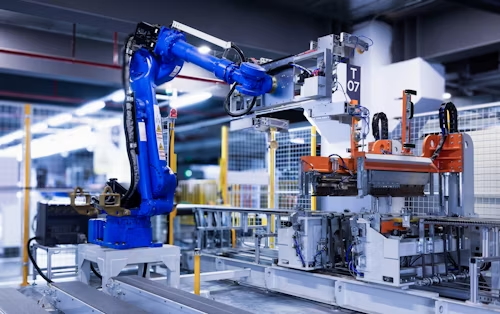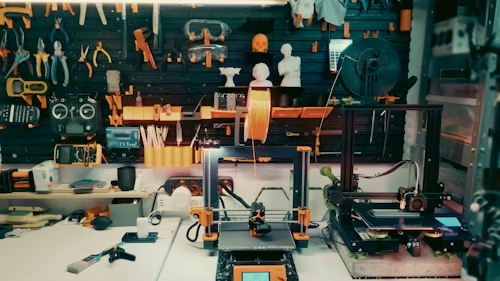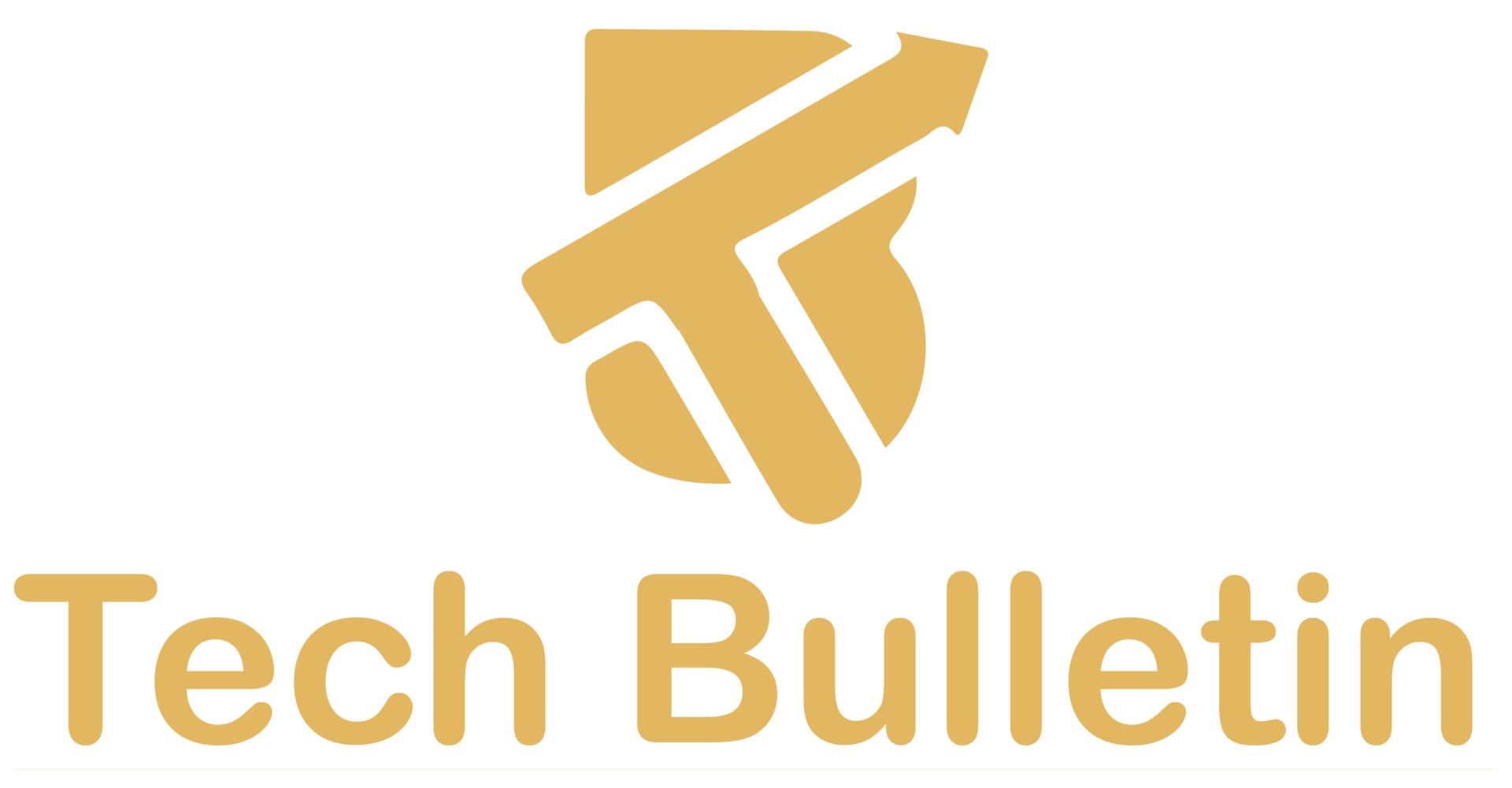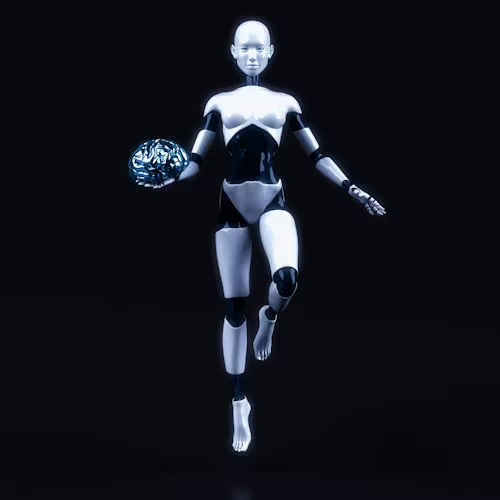Smart Manufacturing and AI: How Artificial Intelligence Is Transforming the Factory Floor

Factories are changing faster than ever. Machines can now see, think, and even learn. This transformation is called smart manufacturing, and it’s being driven by artificial intelligence (AI).
If you’ve ever wondered how AI fits into the world of making things from cars to clothes, this article explains. We’ll look at what smart manufacturing is, how AI powers it, what benefits and challenges come with it, and where the future is heading.
What Is Smart Manufacturing?
Traditional manufacturing is about machines doing repetitive tasks. Operators control them, maintenance teams fix them, and managers monitor results.
Smart manufacturing, on the other hand, uses digital technology and data to make factories more connected, intelligent, and efficient. It’s part of a broader industrial revolution often called Industry 4.0.
At the heart of smart manufacturing is AI; the ability of machines to process data, recognize patterns, and make decisions with minimal human input. Think of it this way:
- In the past, a human spotted a problem, analyzed it, and decided what to do.
- Today, AI can analyze thousands of data points every second and recommend or even execute the best solution instantly.
Why AI Matters in Smart Manufacturing
AI brings the “brainpower” to the machines and systems that make up a modern factory. Let’s explain what it can actually do.
1. Predictive Maintenance
Machines usually fail without warning, causing expensive downtime. With AI, factories can analyze sensor data (like vibration, temperature, and sound) to predict failures before they happen. This allows repairs or part replacements at just the right time; not too early, not too late.
2. Quality Control
AI-powered vision systems can inspect products more accurately than human eyes. They catch tiny scratches, color variations, or defects that are invisible to most people. This means higher product quality and less waste.
3. Process Optimization
AI continuously studies how the production line works and adjusts settings for maximum efficiency. It might change the speed of a conveyor belt, the temperature of a furnace, or the timing of a robotic arm to reduce errors and save energy.
4. Smarter Supply Chains
AI forecasts demand, tracks inventory, and ensures raw materials arrive when needed. It helps companies avoid both shortages and overstocking. This makes operations smoother and more sustainable.
5. Greater Customization
Consumers now want personalized products. AI makes it possible to switch between product types quickly, automatically adjusting machines without long setup times.
6. Better Decision-Making
By analyzing all the data from machines, suppliers, and customers, AI provides insights for managers. Decisions that once took weeks can now happen in minutes, based on facts rather than guesswork.
How AI Works in Smart Manufacturing
Behind the scenes, several AI technologies make all this possible. Here are the most common ones:
Machine Learning (ML)
ML algorithms learn from historical data. They spot patterns for example, how a vibration signal predicts a broken bearing, and use that knowledge to forecast future events.
Computer Vision
This type of AI allows machines to “see.” Cameras capture images, and AI models analyze them to detect flaws, misalignments, or assembly errors instantly.
Natural Language Processing (NLP)
Some factories use NLP so technicians can talk to machines using voice commands like saying, “Show last hour’s temperature data.”
Robotics and Automation
AI enhances robots, giving them flexibility and awareness. Instead of doing one fixed job, AI-powered robots can adjust based on context, sensor inputs, or product variations.
Digital Twins
A digital twin is a virtual copy of a real machine or process. AI uses this digital model to test ideas or predict outcomes without interrupting actual production.
Examples of Manufacturing AI
Let’s look at a few easy-to-understand examples of smart manufacturing AI in action:
- Car Manufacturing: AI-driven robots assemble vehicles while checking each weld or paint layer for precision.
- Food Industry: AI systems control mixing and packaging lines, reducing spoilage and ensuring freshness.
- Electronics: Computer vision detects microscopic defects in chips before they reach customers.
- Textile Production: AI adjusts tension and dye flow to maintain perfect color consistency.
- Energy Plants: Predictive maintenance ensures turbines run efficiently and safely.
Benefits of Smart Manufacturing AI
Here’s what companies and workers gain from adopting AI-powered systems:
1. Less Downtime
AI enables predictive maintenance by constantly monitoring machines and identifying early signs of wear or failure. This prevents unexpected breakdowns, reduces production interruptions, and extends equipment lifespan.
2. Higher Product Quality
AI-driven vision systems detect defects and irregularities that human eyes might miss. This leads to more consistent product quality, fewer errors, and higher customer satisfaction.
3. Reduced Costs
AI optimizes production schedules, energy use, and material consumption. Cutting waste and improving efficiency, companies can lower their operating costs while maintaining or even increasing output.
4. Faster Response
AI systems analyze data in real time and adjust operations immediately when problems or changes occur. This flexibility prevents bottlenecks, improves workflow, and allows factories to respond quickly to market demands.
5. Better Employee Support
Taking over repetitive or physically demanding tasks, AI allows workers to focus on higher-value activities such as problem-solving and innovation. This improves job satisfaction and workplace safety.
6. Environmental Sustainability
AI helps reduce energy consumption and material waste by monitoring and adjusting resource usage. Smarter operations mean lower emissions and a smaller environmental footprint.
7. Continuous Improvement
AI continuously learns from data, revealing trends and opportunities for process improvements. Over time, factories become more adaptive, innovative, and competitive.
Challenges and Risks
Smart manufacturing AI offers major advantages, but it also comes with several challenges that organizations need to manage carefully:
- Trust and Transparency: Some AI systems operate like “black boxes,” making it difficult to explain their decisions. Businesses must ensure transparency to build trust among employees and stakeholders.
- High Initial Costs: Implementing sensors, data infrastructure, and AI software often requires a significant upfront investment, which can be difficult for smaller manufacturers.
- Data Management: AI systems rely on high-quality, consistent data. Many older machines either lack data collection capabilities or use incompatible systems, making integration complex.
- Cybersecurity: Increased connectivity exposes factories to potential cyberattacks. Protecting sensitive data and securing networks is essential.
- Skill Gaps: AI adoption requires employees who understand both technology and manufacturing processes. Companies must invest in training or hire specialized talent.
- Change Resistance: Workers may fear job loss or struggle to adapt to new technologies. Clear communication, retraining, and involving staff in the transformation process can reduce resistance.
How Companies Can Get Started
For manufacturers planning to adopt AI, here’s a straightforward roadmap to begin the transition effectively:
- Identify Problems: Start by defining specific goals such as reducing waste, improving quality, or minimizing downtime. Focus on solving real business challenges rather than adopting technology for its own sake.
- Collect and Organize Data: Equip machines with sensors and install data collection systems. Ensure the information is accurate, complete, and accessible for analysis.
- Run Pilot Projects: Begin with a small, manageable project, such as predictive maintenance or automated quality control to test the value of AI before scaling across the factory.
- Evaluate Results: Assess performance by measuring cost savings, productivity gains, and quality improvements. Use these results to refine the approach.
- Scale Gradually: Once a pilot proves successful, expand AI applications step by step to other departments, lines, or facilities.
- Train the Team: Educate employees about how AI works and how to use it effectively. Training reduces fear, builds confidence, and ensures smoother adoption.
- Keep Humans in the Loop: AI should assist, not replace, human expertise. Maintain oversight and encourage collaboration between people and intelligent systems for balanced, reliable decision-making.
Future of Smart Manufacturing AI
The future of smart manufacturing AI is moving toward even greater intelligence, efficiency, and sustainability. As artificial intelligence evolves, factories will become more connected and capable of learning from every operation.
Generative AI will go beyond production to assist in product design, creating innovative prototypes optimized for strength, cost, and performance.

Fully autonomous systems will take on a larger role, with AI managing entire workflows, adjusting production lines, and solving problems instantly with little human supervision. Through edge computing, data will be processed directly on machines, allowing real-time decision-making without delays from cloud transfers.
Human to robot collaboration will also become a defining feature of modern manufacturing, as robots handle repetitive or dangerous tasks while people focus on creative thinking, innovation, and oversight.
At the same time, sustainability will remain a top priority, with AI continuously monitoring energy use, waste, and emissions to help companies reduce their environmental impact. Together, these advancements will create a new generation of smart factories that combine technology, efficiency, and human expertise to deliver faster, cleaner, and more intelligent manufacturing.






